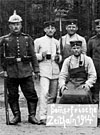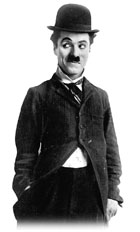![]() WAR
IS BREWING:
The major European powers, entangled in alliances, are lurching toward
a global conflict that will bring about the collapse of empires and a
profound realignment of world power. On one side is the Triple Entente,
comprising Britain, France and Russia; the alliance
WAR
IS BREWING:
The major European powers, entangled in alliances, are lurching toward
a global conflict that will bring about the collapse of empires and a
profound realignment of world power. On one side is the Triple Entente,
comprising Britain, France and Russia; the alliance 
will
eventually include Serbia, Belgium, Italy and Japan. On the other is a
coalition called the Central Powers: Germany, the Austro-Hungarian Empire,
the Ottoman Empire and Bulgaria. The Balkans, long a theater of local
conflict, are a powder keg that will spark a worldwide conflagration,
the first global conflict in history.
HONOR THY MOTHER (May): President Wilson officially designates the second Sunday in May as Mother's Day after schoolteacher and Philadelphia suffragist Anna May Jarvis's six year campaign to create a national holiday to honor mothers.
ASSASSINATION (June 28): The flash point comes when Archduke Franz Ferdinand and his wife, Sophie von Hohenberg, are shot to death by a Serbian nationalist in Sarajevo, capital of the Austro-Hungarian province of Bosnia-Herzegovina. Austria-Hungary uses the event as an excuse to neutralize Serbia, which has long been a troublesome neighbor.
A CONTINENT DIVIDED (July 23): No one imagines that Europe will go to war over a punitive action against Serbia, which is something of a pariah state. But the nations of Europe are entangled in a web of alliances. Czar Nicholas II of Russia decides to stick with his ally, Serbia, dragging France into the conflict. Germany is already pledged to back Austria-Hungary.
FIRST DECLARATION (July 28): Austria-Hungary declares war on Russia.
WAR SPREADS (July
31): Germany asks Russia to cancel its mobilization. When Russia refuses,
Germany declares war on Russia. Europe is immediately engulfed in a blizzard
of mobilization orders and declarations of war.
 |
|
| German soldiers in 1914 |
ENGINEERING FEAT (Aug. 15): The 51-mile long Panama Canal officially opens, connecting the Atlantic and Pacific oceans. The canal gives Western freighters a shortcut to Asian markets and allows the United States naval communication between coasts.
|
What's Hot Births William S. Burroughs, novelist, Feb. 5 Gen. William C. Westmoreland, March 26 Alec Guinness, actor, April 2 Joe Louis, boxer, May 13 Thor Heyerdahl, explorer, Oct. 6 Dr. Jonas Salk, polio vaccine developer, Oct. 28 Joe DiMaggio, baseball player, Nov. 25 Deaths Ambrose Bierce, American journalist and author (born 1842) |
 Charlie
Chaplin introduces his "little tramp" character to the world in
1914 in the one-reel Mack Sennett film, "Kid Auto Races at Venice."
The character, an immediate hit, will be the protagonist in several
of Chaplin's later full-length classics.
Charlie
Chaplin introduces his "little tramp" character to the world in
1914 in the one-reel Mack Sennett film, "Kid Auto Races at Venice."
The character, an immediate hit, will be the protagonist in several
of Chaplin's later full-length classics.